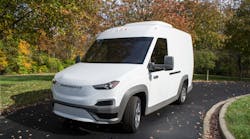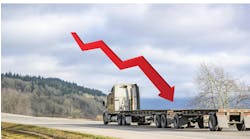In the 32 days between Black Friday and Christmas, 400,000 delivery vehicles will deliver more than 30 million packages a day across the U.S.
With all that driving and delivering going on across the country, Ohio-based Workhorse Group says delivery fleets could save a lot of money on last-mile delivery with electric-powered trucks like the vehicles the OEM produces.
Holiday e-commerce spending is expected to surpass $100 billion this year. And 2017 is the first year that online sales are expected to exceed in-stores sales; as 70% of all homeowners expect to receive a package this holiday season.
Workhorse asks: How will roughly 1 billion packages be delivered in a cost-effective way?
Last-mile delivery adds up to almost 50% of the delivery cost, according to the OEM, which has produced some sharp infographics to highlight how going electric could keep delivery costs down.
According to Workhorse, diesel vehicles cost $1 per mile, which adds up to $65.00 per day; but electric vehicles cost $0.35 per mile, amounting to about a third of the cost at $22.75 per day.
If all 400,000 package-delivery vehicles were using battery-powered delivery instead of diesel, it would amount to $540 million in last-mile-delivery savings.
Large U.S. companies such as FedEx, Frito Lay, UPS, and Ryder have already added electric Workhorse vehicles to their fleets.
As a busy 2017 nears its end, the OEM is celebrating its work “to innovate the transportation space using electric fleet delivery vehicles to transform last mile delivery.”
In 2017 Workhorse:
- Unveiled the N-GEN ultra low delivery platform, electric delivery van;
- Unveiled the first all electric, plug-in, extended range pickup truck;
- Unveiled the SureFly personal passenger drone;
- Partnered with UPS for drone delivery testing;
- Was named a finalist for the pending USPS $6 billion postal truck contract.






